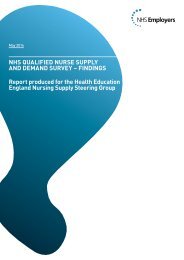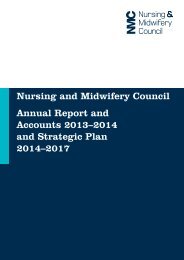Journal_1_2014_final_WEB
Journal_1_2014_final_WEB
Journal_1_2014_final_WEB
You also want an ePaper? Increase the reach of your titles
YUMPU automatically turns print PDFs into web optimized ePapers that Google loves.
Apart from the growth factors, activated platelets<br />
release large amounts of substances that<br />
contribute to primary homeostasis, including<br />
serotonin, catecholamines, fibrinogen, fibronectin,<br />
factor V, factor 8 (von Willebrand<br />
factor), thromboxane A 2 and calcium [9-13] .<br />
As a result, platelet aggregates (clots) are formed, causing<br />
platelet stabilisation by cross-linked fibrin and sticky<br />
glycoproteins. The fibrin matrix formed promotes normal<br />
cell infiltration with monocytes, fibroblasts and other cells<br />
that play an important role in wound healing.<br />
The current use of PRP for the acceleration of bone<br />
repair and soft tissue growth has become a true breakthrough<br />
in dentistry, traumatology, sports medicine, cosmetology<br />
and surgery. PRP has already proven to be useful<br />
in tissue engineering and cellular therapy [9,10,14,15] . PRP<br />
is most widely used for the filling of large bone defects in<br />
maxillofacial surgery [1,11,16] . PRP can be used along with<br />
bone material (the patient’s own or bone substitute), applied<br />
to the implant site before the use of bone material,<br />
placed atop of the bone material or used as a biological<br />
membrane [6,11,16] . PRP has proven to be effective in accelerating<br />
soft-tissue healing and epithelialisation [6] . PRP is<br />
indicated for use in free connective tissue graft procedures,<br />
manipulations with mucoperiosteal flaps and soft tissue<br />
augmentation for cosmetic purposes in dentistry [17,18] .<br />
Following the implementation of PRP therapy in dentistry,<br />
the treatment began to be used in orthopaedics and<br />
traumatology. PRP technology is most widely used in the<br />
management of acute injury for the stimulation of osteogenesis<br />
in combination with osteosynthesis and in the<br />
treatment of arthrosis [19] . A method for the stimulation<br />
of neoangiogenesis in the ischaemic tissues of the lower<br />
extremities using PRP has been developed [20] .<br />
Currently, several papers have been published on PRP<br />
use for the management of chronic venous stasis leg ulcers<br />
developed against the backdrop of chronic arterial or<br />
chronic venous insufficiency. The results of these studies<br />
allowed the conclusion that the use of PRP in the combination<br />
treatment of stasis ulcers provides a wide range<br />
of local therapeutic effects, improves treatment results,<br />
enables considerable reduction of the length of treatment<br />
and increases patient quality of life that is also of economic<br />
importance [20-25] .<br />
Table 1. Microbiological characteristics of the pathological focus<br />
(day 1 of treatment)<br />
Pathogen<br />
Study group<br />
n=44<br />
Reference group<br />
n=37<br />
St. aureus MSSA 6 (13.6%) 6 (16.2%)<br />
MRSA 3 (6.8%) -<br />
Enterococcus spp. 4 (23.5%) 1 (2.7%)<br />
Pseudomonas aeruginosa 8 (18.2%) 1 (2.7%)<br />
Acinetobacter baumannii – 2 (5.4%)<br />
Klebsiella pneumoniae 2 (4.5%) 2 (5.4%)<br />
Escherichia coli 4 (9.1%) 5 (13.5%)<br />
Proteus spp. 2 (4.5%) 7 (18.9%)<br />
Microbial association 9 (20.5%) 8 (21.6%)<br />
Microbial growth not revealed 6 (13.6%) 5 (13.5%)<br />
Average bacterial load in the wound 106 106<br />
Methods<br />
We analysed the treatment results of 81 patients with<br />
chronic wounds of different aetiology –namely, venous<br />
leg ulcers (VLUs): 8 patients; ulcers of mixed aetiology<br />
(UMEs): 20 patients; leg ulcers with underlying diabetic<br />
foot syndrome (DFS): 20 patients; post-traumatic and<br />
postoperative ulcerated scars and trophic ulcers (STUs):<br />
19 patients; and decubital ulcers (DUs): 14 patients.<br />
The exclusion criteria were as follows: suspicion of ulcer<br />
malignisation, presence of systemic vasculitis, oncologic<br />
condition or haematologic disorder, or low adherence<br />
of patients to their treatment.<br />
Following the bacteriological testing, all of the patients<br />
were administered treatment against the main disease and<br />
topical treatment aimed at bacterial clearance and decontamination<br />
of the wound. The microbial landscape at<br />
baseline is presented in Table 1.<br />
All of the patients were divided randomly into two<br />
groups at admission. Patients who did not meet the inclusion<br />
and exclusion criteria were excluded from the study.<br />
Forty-four patients in phase II of wound healing (i.e.,<br />
the study group that included 17 men and 27 women with<br />
an average age of 56.0 ± 3.1 years and VLU (3 patients),<br />
UME (8 patients), DFS (12 patients), STU (14 patients)<br />
or DU (7 patients), with an average wound area of 90.2<br />
± 14.1 cm 2 ) received PRP flat clot applications. Different<br />
methods for PRP preparation have been described (e.g.,<br />
double- or single-spin centrifuge harvesting). However,<br />
a common algorithm exists for PRP preparation that<br />
comprises three stages: blood collection, PRP isolation<br />
from whole blood using centrifugation and activation of<br />
platelets contained in the PRP [26] . We used the method<br />
described by Eduardo Anitua and BTI equipment (Spain)<br />
to obtain PRP in the form of a gel (flat clot) [23] . The volume<br />
of blood drawn depends on the size of the wound<br />
and is approximately half of the wound area in cm 2 . For<br />
example, with a wound area of approximately 100 cm 2 and<br />
38<br />
EWMA <strong>Journal</strong> <strong>2014</strong> vol 14 no 1




